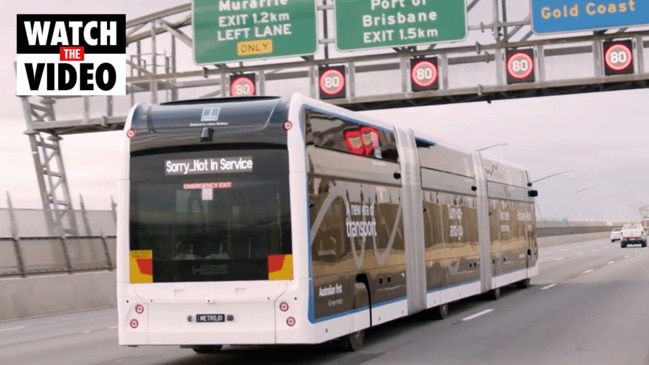Adrian Schrinner: Time to revisit Brisbane’s abandoned busway plans
With only a third of Brisbane’s planned 75km of busways ever built, the 2032 Games mean they should be revisited, writes Adrian Schrinner.

One of the most revolutionary pieces of public transport infrastructure built in Queensland over the last few decades wasn’t a new train or a light rail line.
It was actually Brisbane’s South East Busway.
While largely unheralded, the busway is a public transport powerhouse, carrying more commuters each year than any local train route.
Our Brisbane Metro project is a product of the busway’s runaway success.
The Metro will ease the busway’s bottlenecks and deliver turn-up-and-go services on modern, high-capacity vehicles.
The South East Busway was actually part of a much bigger network of busways throughout Brisbane that unfortunately never happened.
Back in 1997, the South East Queensland Integrated Regional Transport Plan proposed 75km of busways servicing 65 stations.
Only about 25km of the segregated busways were ever built.
Left on the drawing board were a Northern Busway all the way to Chermside and the Eastern Busway to Capalaba.

With the Brisbane 2032 Olympic and Paralympic Games a decade away, we need to revisit the busway blueprint.
So, together the Brisbane and Redlands councils have committed to fund a new study into delivering a Brisbane Metro route out to Capalaba.
In an Olympic context, this study is important.
The previous Eastern Busway route went past three planned Brisbane 2032 venues – the Brisbane International Shooting Centre, Chandler Indoor Sports Centre and the Anna Meares Velodrome.
There’s also an opportunity to deliver a public transport solution for the Redland Whitewater Centre.
Beyond the Games, Brisbane’s east would benefit significantly from such a mass-transit solution.
Back in 2006, the then state government talked about 15-minute trips between Capalaba and Buranda on its Eastern Busway, while warning vehicle travel times would double by 2026.

While progress on the Eastern Busway stopped in 2011, there’s scope to continue.
For example, Coorparoo Square, where Brisbane’s original Myer Centre once stood, was constructed in a way that it can be retrofitted to include an underground bus station.
While a fully segregated option like the South East Busway is unlikely to be viable any more, consideration must be given to faster, more efficient mass transit solutions.
There will always be those that claim the answer is more train lines.
However let’s not forget that it took a century to complete the Redcliffe line.
And it’s costing billions and billions of dollars to build the 6km inner-city rail tunnel which will have network-wide consequences.
Since trams were removed in the late 1960s, Brisbane has been a bus city.
Two-thirds of our public transport trips are taken by bus, and that isn’t about to change.
The South East Busway’s success can be mirrored elsewhere using our fully electric Brisbane Metros.
But it’ll require all levels of government to get on board.
Adrian Schrinner is Lord Mayor of Brisbane and chair of the Council of Mayors (SEQ)




